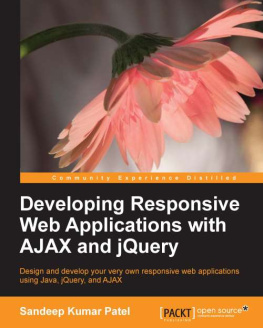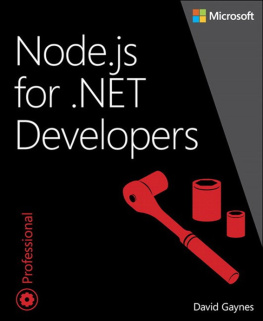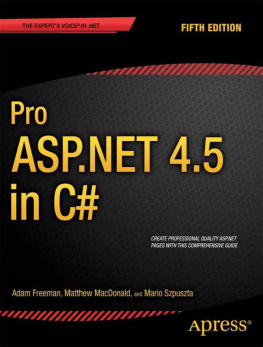The author and publisher have made every effort to ensure the accuracy of the information herein. However, the information contained in this book is sold without warranty, either express or implied. Neither the authors and SitePoint Pty. Ltd., nor its dealers or distributors, will be held liable for any damages to be caused either directly or indirectly by the instructions contained in this book, or by the software or hardware products described herein.
About the Authors
Cristian Darie is a software engineer with experience in a wide range of modern technologies, and the author of numerous technical books, including the popular Beginning E-Commerce series. He initially tasted programming success with a prize in his first programming contest at the age of 12. From there, Cristian moved on to many other similar achievements, and is now studying distributed application architectures for his PhD.
Wyatt Barnett leads the in-house development team for a major industry trade association in Washington DC. When not slinging obscene amounts of C# and SQL at a few exceedingly large monitors, he is most often spotted staring at HDTV and other forms of entertainment in local watering holes.
Tim Posey is a long-time developer and a passionate educator. Armed with a B.S. in Computer Science and an M.B.A. in Finance, he has traversed many industries, consulting for multiple corporations in banking, insurance, energy, and various e-commerce industries. As a serial entrepreneur, he mentors local startups and non-profit organizations. He serves as a senior software engineer at a Fortune 1000 company and an Adjunct Professor of Finance for the American Public University System. His favorite pastime is watching Alabama football. He may be contacted at tim@timposey.net.
About the Technical Editor
Ricky Onsman is an Australian freelance web designer and jack of all trades. With a background in information and content services, he built his first website in 1994 for a disability information service and has been messing about on the web ever since. He is the president of the Web Industry Professionals Association.
About SitePoint
SitePoint specializes in publishing fun, practical, and easy-to-understand content for web professionals. Visit http://www.sitepoint.com/ to access our books, newsletters, articles, and community forums.
To my family and friends.
Cristian Darie
To my Father, whose guidance got me this far.
Wyatt Barnett
For LJ and Erin.
Tim Posey
Foreword
Before you go much further in reading this book, give yourself a small pat on the back for investing the money, time and effort in learning ASP.NET. Perhaps it is a new technology to you, or perhaps you are familiar with ASP or other programming in .NET. Either way, its a great skill to add to your toolbox and increase your value as a developer.
ASP.NET is useful in more ways than one. If you arent already a .NET developer, its the gateway to learning the framework, and the languages that you can use to program against it. The most common languages, and the ones covered in this book, are C# and VB.NET. Skills in these languages and framework go way beyond web development. You can use them for mobile development with Silverlight, which uses the .NET framework for Windows Phone 7 Desktop development; or .NET on Windows Power Desktop development with the Windows Presentation Foundation (WPF), part of the .NET Framework Workflow development for business processes using the Workflow Foundation (WF)which is also part of the .NET Framework Connected systems development using the Windows Communication Foundation (WCF).
Beyond these, the skills continue to grow in relevance as the industry matures and develops. Time invested in .NET development will reap benefits with cloud-scalable applications using Windows Azure, as well as the new Windows 8 client applications. But you have to start somewhere, and starting with the web is a wise choice. ASP.NET allows you to build dynamic websites, web applications and web services. As a developer, you know and understand that there as many different types of web application as there are web applications themselves, and you need a powerful and flexible framework that will allow you to build them, without having to reinvent the wheel each time.
ASP.NET is this framework, and with its Web Forms and Controls technologies, you can use rapid development methodologies to get your application up and running quickly. Being fully standards-compliant, you can also make it beautiful using CSS. Beyond this, particularly for professional, commercial applications, youll need tools that allow database connectivity to be smart, secure, and efficient, and ASP.NET with its ADO.NET technology provides this for you.
And of course it wouldnt be Web 2.0 if you didnt have the ability to use Ajax. ASP.NET gives you simple but effective ways to use AJAX with server-side controls that do a lot of the hard work of handling asynchronous page updates for you. Indeed, server-side coding is something that youll do a lot of with ASP.NET. Its amazing how simple it can make writing distributed applications, where the server is smart enough to manage sessions, connectivity, presentation and more on your behalf.
This book provides you with everything you need to know to skill up in ASP.NET development with Web Forms technology. Its a fantastic learning tool, written in an approachable and informative way. I strongly recommend you pick up your copy of this book, download the free Visual Web Developer Express tools, and start coding in ASP.NET. Youll be amazed at what you can build, quickly and easily.

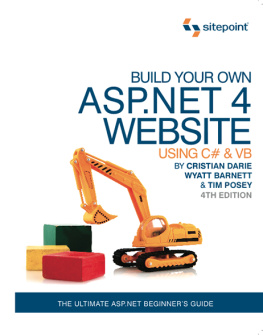
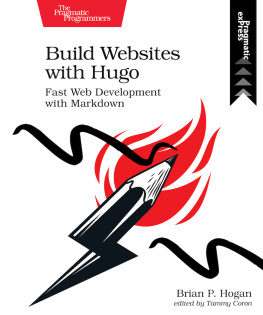

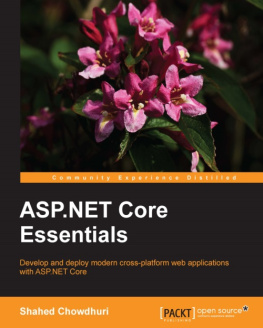
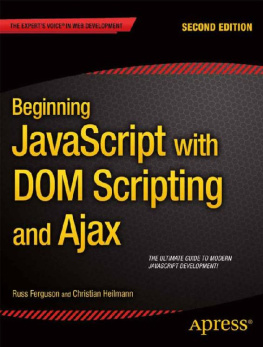
![Vishal Layka [Vishal Layka] - Learn Java for Web Development: Modern Java Web Development](/uploads/posts/book/119395/thumbs/vishal-layka-vishal-layka-learn-java-for-web.jpg)
